Adverse Childhood Experiences and Trauma | Risk Factors for ACEs, Prevention & Intervention
Adverse Childhood Experiences and Trauma
#ACES #Traumainformed #PTSD
📢SUBSCRIBE and click the BELL to get notified when new videos are uploaded.
💲 CEU course https://www.allceus.com/member/cart/index/product/id/1422/c/
Unlimited CEUs $59 based on these videos at allceus.com for social work, counseling, marriage and family therapy, addiction counseling, case management, pastoral counseling and more.
Join this channel to get access to perks:
https://www.youtube.com/channel/UCAE3JJi8tX7gfhZEXCUGd_A/join
Objectives
~Explore the relationship between ACEs and trauma
~Identify the impact of ACEs & traumatic injury on mental, physical & interpersonal health in adults
~Explore risk factors for ACEs & subsequent prevention and intervention measures.
Overview of LTE of ACEs
~Adverse childhood experiences (ACEs) are stressful or traumatic events that children experience before age 18 years. Studies have linked exposure to ACEs &negative health, and developmental&behavioral outcomes.
~Traumatic Event: Direct or indirect exposure to an event that involved the possibility of death or serious injury
~Traumatic Injury: Psychological consequences sometimes experienced after a trauma.
~ 61% of adults surveyed across 25 states reported that they had experienced at least one type of ACE, and nearly 1 in 6 reported they had experienced four or more types of ACEs.
~Over 50% of adolescents have been exposed to ACEs which can have detrimental effects on learning and behavior and is associated with increased suicidal ideation in adolescents
~68.1% of people who reported homelessness in childhood also reported experiencing four or more ACEs.Only 16.3% of people were never homeless in childhood reported experiencing four or more ACEs
~ACEs have a different impact on the brain based upon the age of exposure, individual factors and microsystem protective factors
~Strongest impacts are found for younger children (ages 2-5) and those living in households with incomes below 200% of the federal poverty level
~ACEs contribute to disturbances in cognitive and affective processing including
~Heightened attention toward threatening stimuli
~Increased experience of loneliness
~Increased HPA-Axis dysregulation / reduced impulse control
~Functional alterations in key stress–and emotion associated brain regions particularly the anterior cingulate cortex [ACC], amygdala and hippocampus (shrinkage)
~Initial increase in amygdala volume after ACEs, followed by a decrease in volume due to persistent distress in later life
~These brain regions are particularly susceptible to damage from trauma/HPA-Axis hyperactivation due to the high density of glucorticoid receptors
~Exposure to specific types of ACEs selectively affect the sensory systems which were involved in perceiving the trauma
~Mental disorders in individuals with ACE exposure tend to have more severe symptomatology, increased risk of comorbidity and are less likely to respond to standard treatments (why?)
~ In adults, ACE exposure is associated with
~ A wide range of physical disorders including obesity, dysregulation of the immune system, autoimmune disorders and abnormal pain perception with and without underlying causes
~ Stress itself can sensitize nociceptive neurons in the spinal cord which result in comparable changes in pain-perception and related behavior.
~ Increased levels of pro-inflammatory cytokines
~ Disruptions in intestinal microbiota and the mucosal immune system
~ 200-400% increased risk of heart disease, cancer, chronic lung disease, skeletal fractures, depression, diabetes and prediabetes, liver disease
Summary
~ More than 60% of people have experienced ACEs
~ It is believed the rate of exposure to ACEs has increased significantly during COVID
~ Not everyone who experiences ACEs will develop traumatic injury
~ Injuries related to ACE trauma include:
~ Borderline and antisocial personality disorder
~ Mood disorders
~ PTSD
~ Addictions
~ Autoimmune issues including IBS, Chron’s, Diabetes
~ Heart disease, cancer, chronic lung disease, liver disease
~ Increased difficulty in interpersonal relationships due to above issues
~ Increased risk to become a perpetrator of ACEs
#traumainformedcare #adversechildhoodexpoeriences #aces #mentalhealth
CHAPTERS:
00:00 Adverse Childhood Experiences and Trauma
00:31 Objectives
01:84 Overview of LTE and ACEs
05:21 Overview of LTE and ACEs 2
08:57 Overview of LTE and ACEs 3
13:33 Overview of LTE and ACEs 4
17:46 Overview of LTE and ACEs 5
23:03 Adult Childhood Experiences
35:25 Risk Factors in the Child
39:08 Adult Childhood Experiences
40:39 Risk Factors in the Child
44:33 Risk Factors for Caregivers to Perpetrate ACEs 1
51:30 Risk Factors for Caregivers to Perpetrate ACEs 2
56:07 Risk Factors for Caregivers to Perpetrate 3
58:00 Intervention (Current) and Prevention (Future) 1
59:43 Intervention (Current) and Prevention (Future) 2
1:00:11 Intervention (Current) and Prevention (Future) 3
1:00:50 Summary
1:02:42 Thank You
-
 24:20
24:20
Grada Robertson
1 year agoDon't let your childhood trauma hold you back any longer ...
20 -
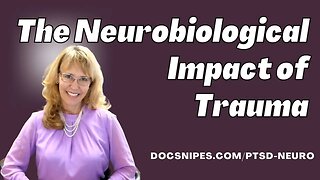 1:00:31
1:00:31
DocSnipes
4 years agoThe Neuroscience of Trauma and Addiction | PTSD & cPTSD Interventions
95 -
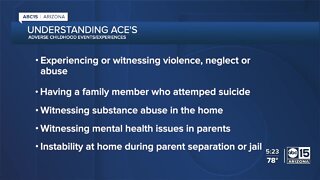 4:50
4:50
KNXV
2 years agoUnderstanding adverse childhood events (ACEs)
151 -
 22:51
22:51
Grada Robertson
5 months ago $0.16 earnedUncover the Hidden Impact of Childhood Traumas on Your Health
55 -
 43:34
43:34
Kat Khatibi Podcast
1 year agoParentification, Trauma, PTSD, and how it Impacts Us as Children and Adults with Roxana Karimi, LMFT
57 -
 39:14
39:14
Discover Your Authentic Self
2 years agoHow To Heal Childhood Trauma
3 -
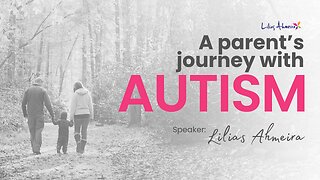 38:37
38:37
LiliasAhmeira
9 months agoRaising a Child With Autism Spectrum Disorder | A Parent's Journey With Autism
95 -
 3:32
3:32
Faithfully Engaged
11 months agoUnresolved Childhood Trauma: Unveiling Hidden Triggers.
15 -
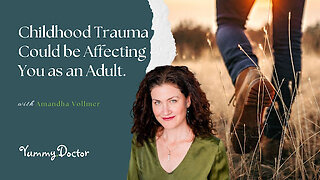 1:04
1:04
yummydoctor
5 months ago $0.07 earnedChildhood Trauma Could be Affecting You as an Adult
87 -
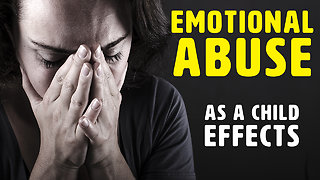 11:38
11:38
Bestie
5 years agoHow Childhood Emotional Abuse Affects You In Adulthood
58